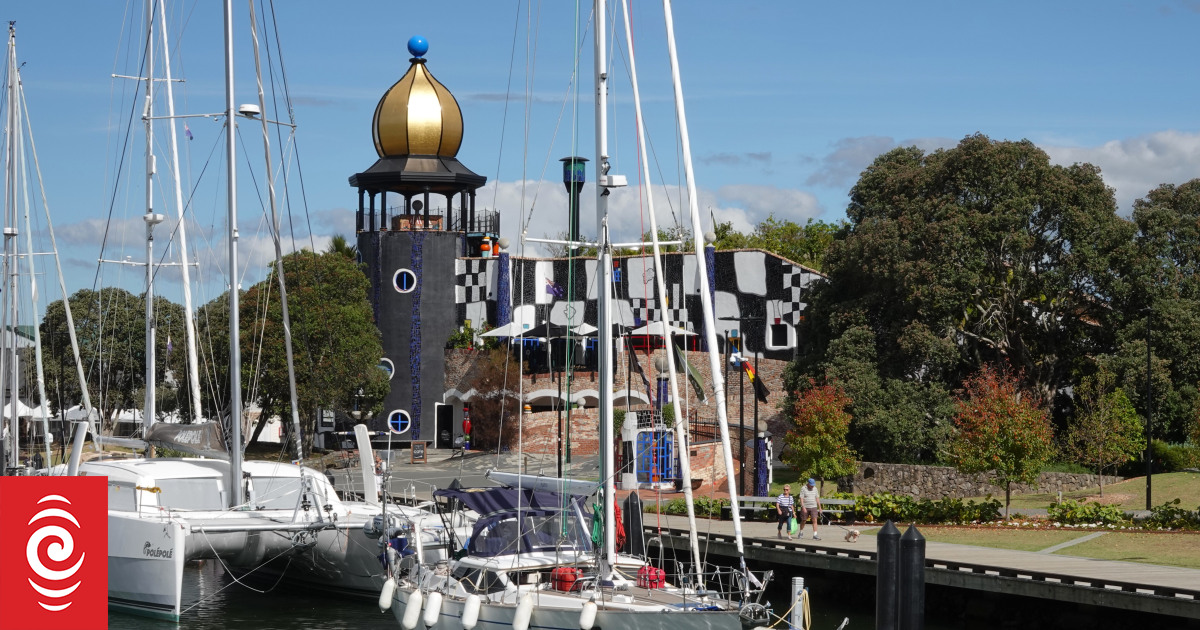
Whangārei’s Hundertwasser Art Centre could run out of money by October 2025.
Photo: Peter de Graaf / RNZ
Whangārei’s acclaimed, but controversial, Hundertwasser Art Centre could run out of money by October 2025 – which means ratepayers may have to stump up to keep it open.
That is despite an undertaking during the long-running campaign to build the centre that it would pay its own way rather than rely on council funding.
The colourful, quirky gallery is the last authentic building in the world designed by the late Austrian artist and environmentalist Friedensreich Hundertwasser.
It houses the largest collection of Hundertwasser works outside Vienna and New Zealand’s only gallery dedicated to contemporary Māori art. It also boasts a café, gift shop, theatre and rooftop forest.
Hundertwasser Art Centre director Joost de Bruin said the project had got off to a rough start, hitting visitor numbers and income.
“We opened in 2022, so still amidst the Covid-19 pandemic. We still operate in a post-Covid context with the number of international tourists not rising to the same level they were when all the planning for this project was done.”
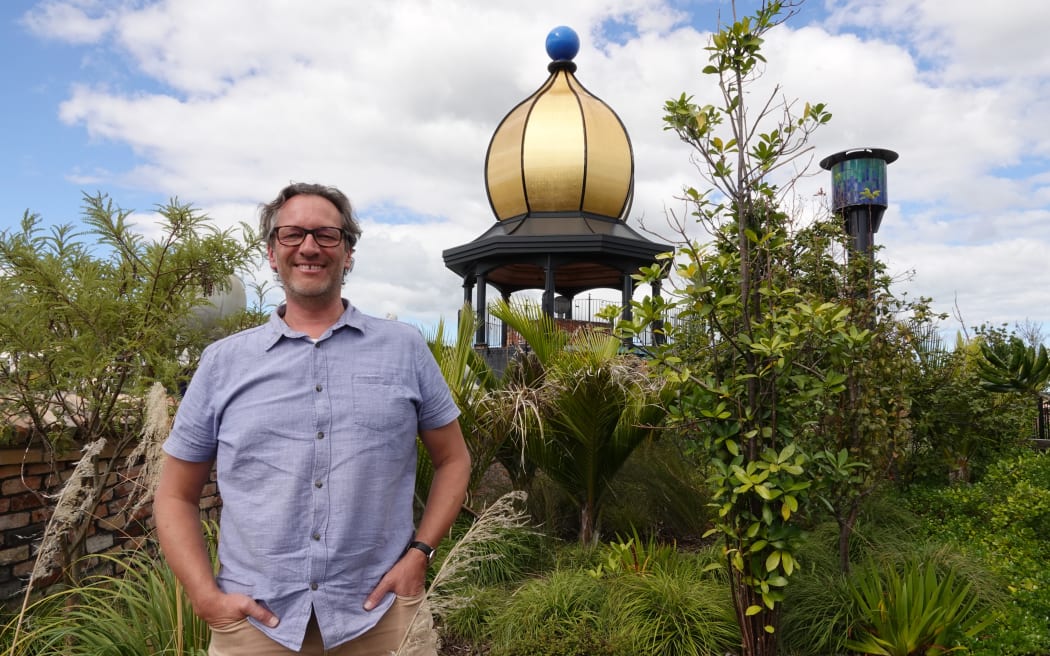
Hundertwasser Art Centre director Joost de Bruin in the building’s roof forest.
Photo: Peter de Graaf / RNZ
Storms such as Cyclone Gabrielle and ongoing road closures also had a major impact.
“Right now State Highway 1 at the Brynderwyn Hills is closed. That’s a major challenge for us. And then there is the economic downturn, where people just have less money to spend on art and leisure,” de Bruin said.
“So there’s been a series of challenges for this project. Some of them other museums and art galleries in New Zealand deal with as well. But some are quite unique to this region.”
The Hundertwasser Art Centre, incorporating Wairau Māori Art Gallery and the neighbouring Whangārei Art Museum both come under the Whangārei Art Trust, a council-controlled organisation.
Whangārei Art Museum receives $657,000 a year from Whangārei District Council, but the Hundertwasser Art Centre was intended to operate without council funding.
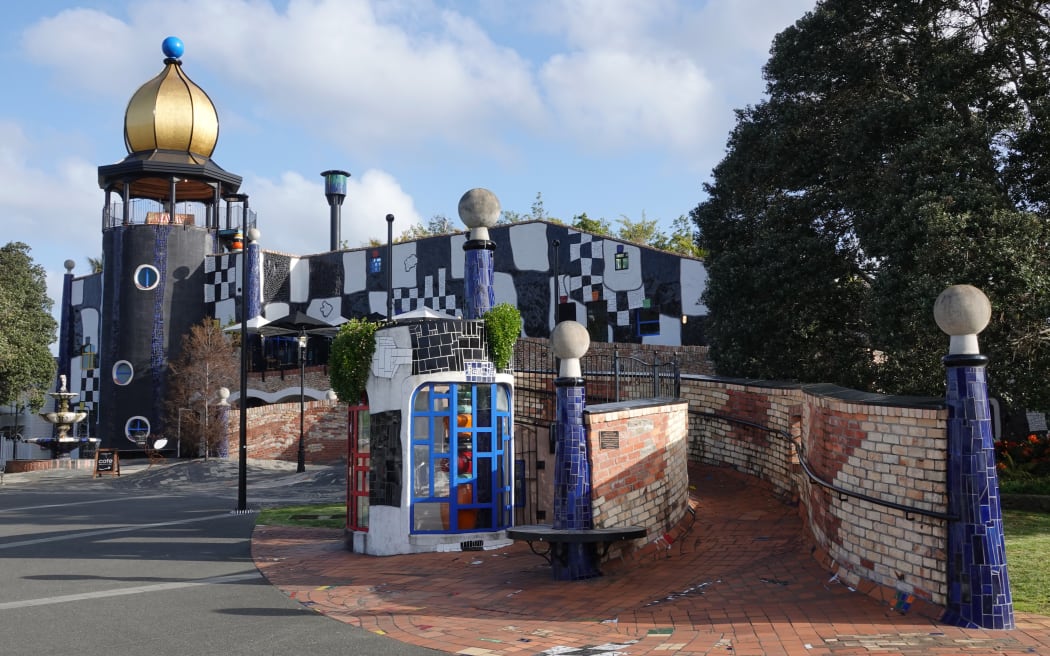
The centre took decades to be realised.
Photo: RNZ / Peter de Graaf
De Bruin said that was a result of the decades-long, on-again, off-again campaign to build the centre.
“It took a lot of effort to get this project across the line, and a huge fundraising community that made it happen. As part of that there was a referendum in Whangārei in which people got to vote as to whether this project should happen.
“During that time, promises were made that this project would operate without council funding, which I think was a sincere promise at the time.
“However, because of the challenges we’ve had in recent years, that has made the situation very difficult. We are, as far as I know, the only museum project in New Zealand operating without ongoing council funding.”
De Bruin would not be drawn on whether he believed the centre should be council-funded, saying that was a matter for the Whangārei Art Trust.
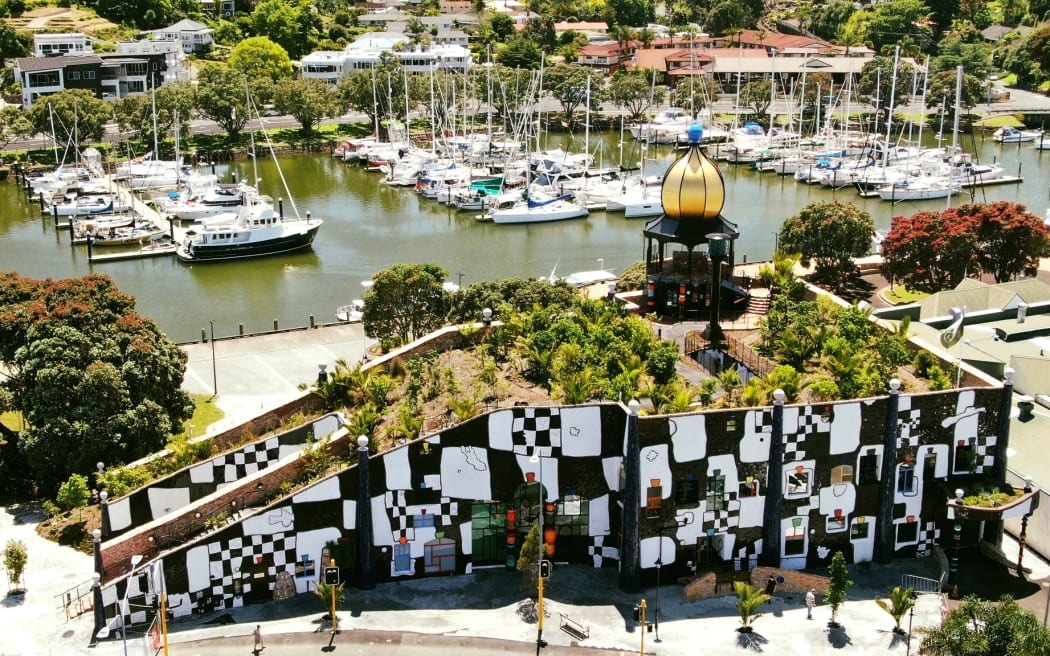
Whangārei’s Hundertwasser Art Centre with Wairau Māori Art Gallery.
Photo: File photo / LDR
The trust’s half-yearly report, presented to Whangārei district councillors last month, showed the centre had 19,800 paying visitors in the second half of 2023 – a sharp drop from the 37,000 in the first four months after the doors opened.
Reduced admission fees and shop sales led to a half-year loss by the Hundertwasser Art Centre of $765,000.
Overall, the Whangārei Art Trust was forecast to lose $655,000 in the year to 30 June 2024.
A $1.25 million “contingency fund”, now administered by the Whangārei District Council, was designed to cover any losses incurred by the centre in its first 10 years.
A sum of $500,000 was drawn down last financial year – the maximum amount that can be used in any 12-month period – and the council has approved access to another $500,000 by the end of June this year.
That will leave just $250,000 in the back-up fund that was supposed to last until 2031.
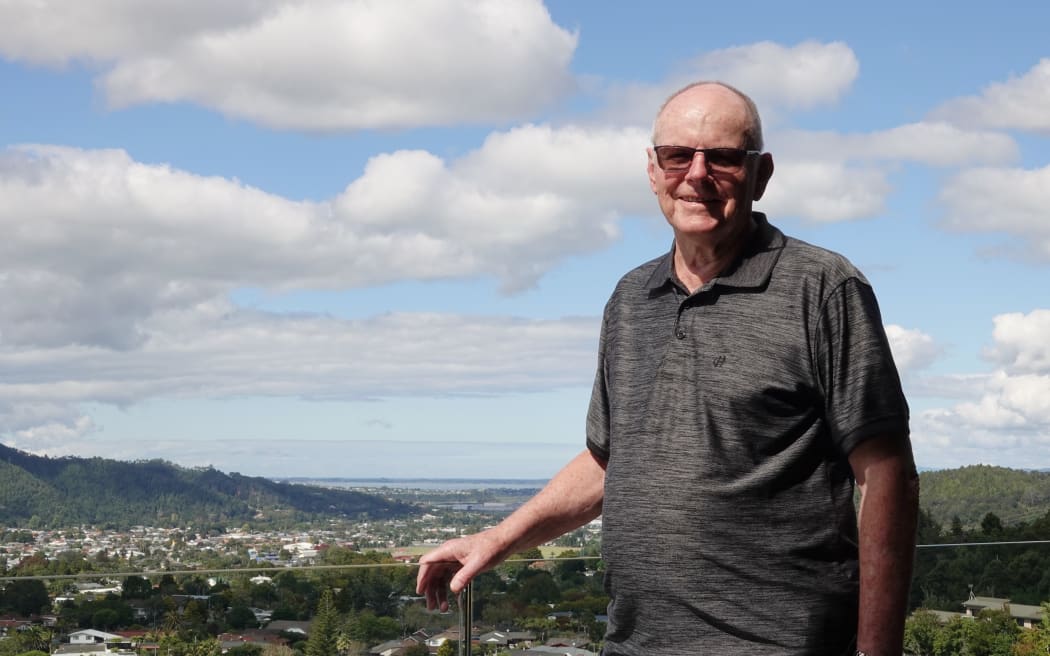
Whangārei Art Trust chairman Bill Shepherd.
Photo: Peter de Graaf / RNZ
Whangārei Art Trust chairman Bill Shepherd said, despite a slight improvement in finances over summer, the centre was expected to run out of money by October 2025.
Asked whether ratepayers would be grumpy if they had to bail out the Hundertwasser Art Centre, Shepherd said: “The answer is yes”.
“And that’s why I’m quite keen to ensure that ratepayers understand that although the business itself is quite challenging to make pay, as far as the local economy is concerned, it’s bringing huge benefits, and that’s good for everybody.”
Shepherd said an independent economic impact report, commissioned by the Ministry of Business, Innovation and Employment, showed construction of the centre contributed $37 million to the Whangārei district.
On top of that was an ongoing $26m a year boost to Northland’s economy from increased visitor numbers, even if they did not set foot inside the centre.
He said the centre had “put Whangārei on the map”, and was the catalyst in the return of cruise ships to the city for the first time in decades.
Five ships were lined up to visit next season, he said.
“So we’ve got this conundrum where it’s very difficult to make the business wash its face, but it’s a really big boon for the local economy.”
Shepherd said the trust was trying to avoid going cap-in-hand to the council by looking for new revenue streams, but that was tough in the current economic conditions.
“At the end of the day, it is a council-controlled organisation, and so the council does have some obligation to step in to keep the keep the business viable if absolutely needed.”
Shepherd said the trust was working on boosting flagging visitor numbers, including with school programmes.
“People can come to have a look at the Hundertwasser building, walk around the outside, take some selfies, but not come inside. If things were better economically, they’d pay the money to go inside. That’s one of our challenges as well – to get them in the door.”
De Bruin said another challenge was shifting people’s perceptions about Whangārei.
“We’re playing a long game. It’s not just about us. It’s also about Whangārei as a destination.
“Whangārei’s really changed over the past decade and not everybody is aware of that. So it’s also about making people aware they shouldn’t just drive straight from Auckland to the Bay of Islands, there is a lot to see here.”
Whangārei District Council has been approached for comment.

